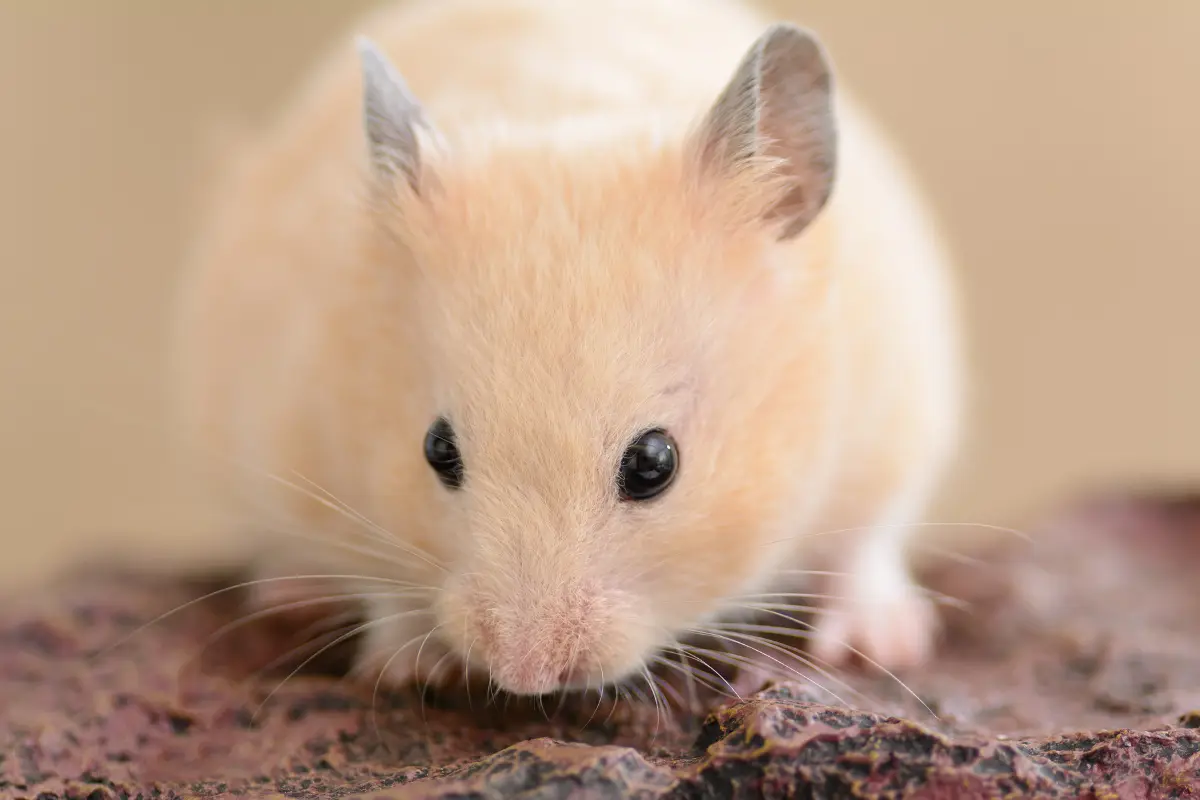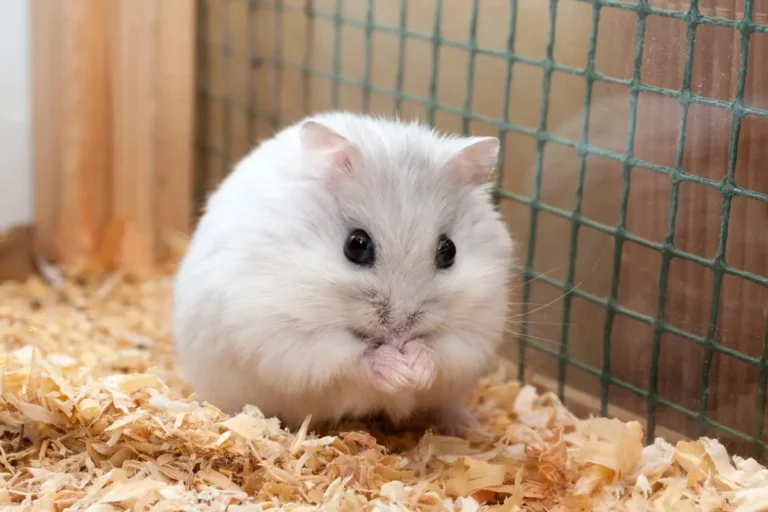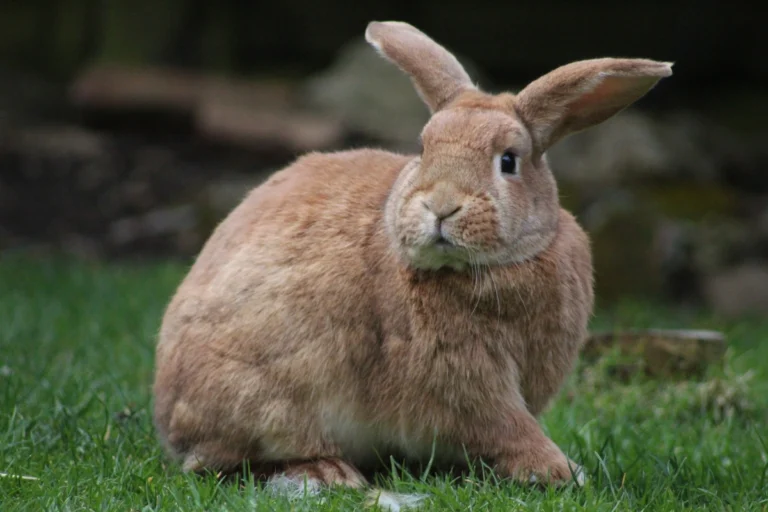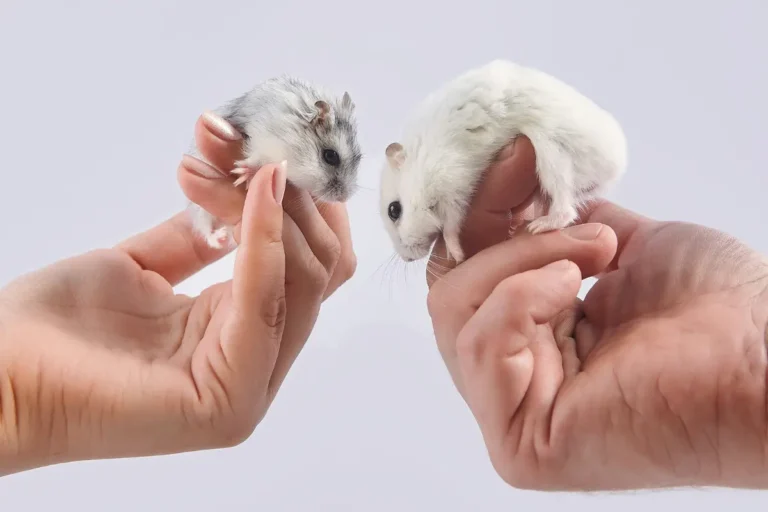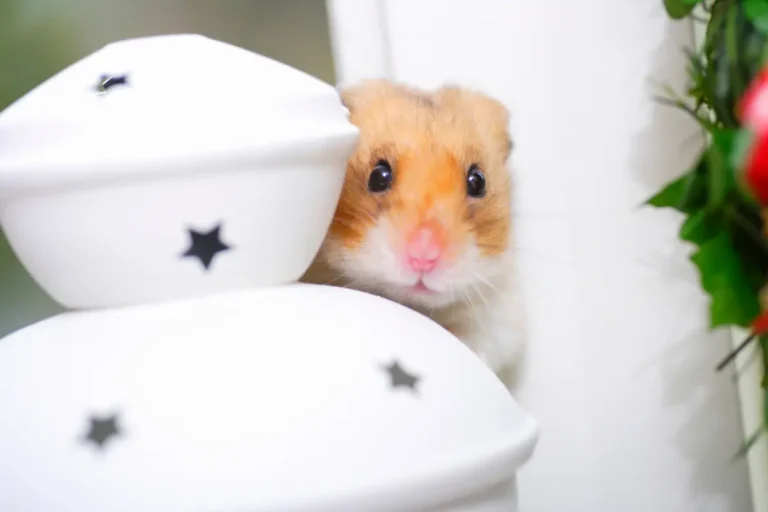How Much Do Hamsters Weigh? A Guide to Hamster Size and Growth
Ever wondered just how tiny your hamster should be? These adorable pets may be small, but their weight can tell you a lot about their health. From baby hamsters lighter than a cookie to full-grown adults, let’s explore what the scale should say for your furry friend.
Average Weights of Different Hamster Breeds
Hamsters come in various breeds, each with its own weight range. Here’s a look at the typical weight for some common hamster species:
Syrian Hamsters (Golden Hamsters)
- Average Weight: 100–200 grams (3.5–7 ounces)
Syrian hamsters are the largest hamster breed commonly kept as pets. They are solitary animals, generally larger in size, which contributes to their heavier weight range.
Due to their size and calm demeanor, they are easy to handle, making them a popular choice for families. Syrian hamsters come in various colors and are known for their gentle nature, although they prefer to live alone.
Teddy Bear Hamsters (Long-Haired Syrian Hamsters)
- Average Weight: 120–200 grams (4.2–7 ounces)
Description: Teddy Bear Hamsters are a variety of Syrian hamster with long, soft fur, giving them a “teddy bear” appearance. Like other Syrians, they are solitary and prefer to be housed alone. Their fluffy coat requires regular grooming to prevent matting.
They are gentle, easy to handle, and popular among pet owners who enjoy grooming. Due to their larger size and calm nature, they make great pets for individuals looking for a friendly and visually unique hamster.
Dwarf Campbell’s Russian Hamsters
- Average Weight: 30–50 grams (1–1.8 ounces)
Description: Dwarf Campbell’s Russian Hamsters are small and compact, known for their sociable nature. Unlike Syrian hamsters, they can live in pairs or small groups if introduced properly.
They have a sturdy build and are slightly larger than Roborovski hamsters. Dwarf Campbell’s are active and curious, making them a popular choice for pet owners who enjoy watching their hamsters explore and interact.
Russian Dwarf Hamsters
- Average Weight: 30–50 grams (1–1.8 ounces)
Description: Russian Dwarf Hamsters are small, social creatures that thrive in pairs or groups. They are similar in size and weight to Dwarf Campbell’s hamsters and share a comparable build and temperament.
Known for their friendly nature, Russian Dwarfs are active and require plenty of space to explore. Their adaptability to group living makes them a popular choice for families and individuals alike.
Winter White Dwarf Hamsters
Average Weight: 30–45 grams (1–1.6 ounces)
Description: Winter White Dwarf Hamsters are named for their unique ability to change fur color in colder months, turning from grayish-brown to white as an adaptation to snowy environments.
They are slightly smaller than Russian Dwarfs and have a rounded body shape. Winter Whites are gentle, easy to handle, and social, making them suitable for cohabitation if introduced properly.
Roborovski Dwarf Hamsters
- Average Weight: 20–25 grams (0.7–0.9 ounces)
Description: The smallest of the commonly kept hamster breeds, Roborovski Dwarf Hamsters are known for their speed and high energy. They are highly active and agile, making them entertaining to watch but challenging to handle. Roborovskis are social and can live in pairs or groups if introduced early. Due to their small size and quick movements, they are more suited to observation than frequent handling.
Chinese Hamsters
- Average Weight: 30–45 grams (1–1.6 ounces)
Description: Chinese Hamsters have a slender, elongated body with a longer tail compared to other hamster breeds, giving them a distinct, mouse-like appearance. They are gentle and relatively calm, though they can be shy at first.
Chinese hamsters are solitary and best kept alone. They are easy to handle and can become quite friendly with their owners, making them a good choice for those looking for a calm, low-maintenance pet.
Here’s a table showing the average weights of different hamster breeds in kilograms, ounces, grams, and pounds:
| Hamster Breed | Kilograms | Ounces | Grams | Pounds |
|---|---|---|---|---|
| Syrian Hamster | 0.1 – 0.2 | 3.5 – 7 | 100 – 200 | 0.22 – 0.44 |
| Teddy Bear Hamster (a type of Syrian) | 0.12 – 0.2 | 4.2 – 7 | 120 – 200 | 0.26 – 0.44 |
| Dwarf Campbell’s Russian | 0.03 – 0.05 | 1 – 1.8 | 30 – 50 | 0.07 – 0.11 |
| Winter White Dwarf | 0.03 – 0.045 | 1 – 1.6 | 30 – 45 | 0.07 – 0.1 |
| Roborovski Dwarf | 0.02 – 0.025 | 0.7 – 0.9 | 20 – 25 | 0.04 – 0.06 |
| Russian Dwarf Hamster | 0.03 – 0.05 | 1 – 1.8 | 30 – 50 | 0.07 – 0.11 |
| Chinese Hamster | 0.03 – 0.045 | 1 – 1.6 | 30 – 45 | 0.07 – 0.1 |
How Much Does A Baby Hamster Weigh?
A newborn baby hamster typically weighs between 2 and 3 grams (0.07 to 0.1 ounces). At birth, they are incredibly tiny, pink, and furless, making them very fragile. The weight of baby hamsters can vary slightly depending on the breed:
- Syrian Hamster Pups: Around 2–3 grams (0.07–0.1 ounces) at birth, growing rapidly in the first few weeks.
- Dwarf Hamster Pups (e.g., Russian, Winter White, and Roborovski): Closer to 1–2 grams (0.04–0.07 ounces) at birth due to their smaller adult size.
- Chinese Hamster Pups typically weigh around 1–2 grams (0.04–0.07 ounces) at birth, similar to other dwarf hamster breeds.
In their first few weeks, baby hamsters grow quickly, gaining weight as they develop fur, open their eyes, and start moving more independently. By the time they are weaned (around 3–4 weeks), they typically weigh between 10 and 30 grams, depending on the breed.
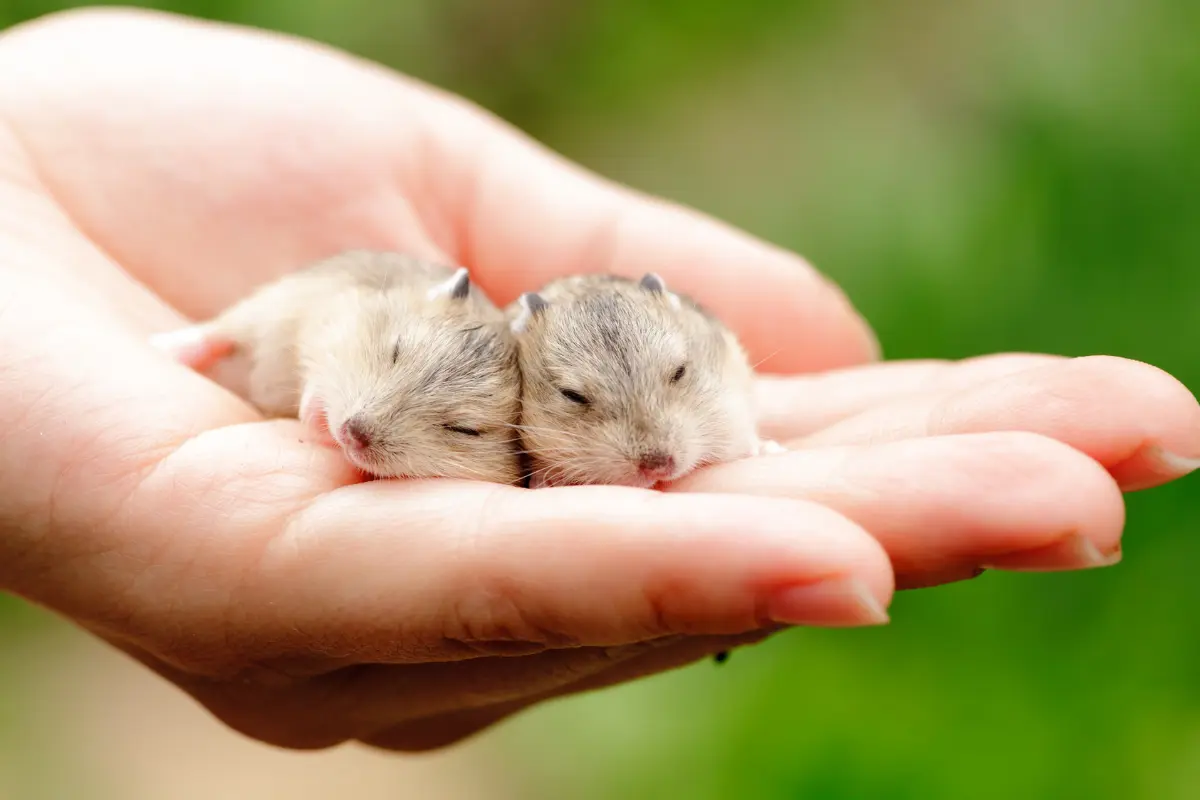
How Much Does A Big Hamster Weigh?
A large hamster, typically a Syrian hamster (the largest and most common hamster breed), can weigh between 150 and 200 grams (5.3 to 7 ounces) at full maturity, though some especially large individuals may reach closer to 250 grams (about 8.8 ounces). Teddy Bear hamsters (a long-haired variety of Syrian hamsters) also fall into this heavier range.
Other hamster breeds, such as the dwarf varieties (Dwarf Campbell’s, Winter White, Roborovski), and Chinese hamsters, rarely exceed 50 grams (1.8 ounces), making Syrian hamsters the primary breed that falls into the “big” hamster category.
Hamster Weight and Growth Cycle: What to Expect at Each Stage
Hamsters go through various stages in their growth cycle, from tiny newborns to fully-grown adults. Understanding their growth pattern and average weight at each stage can help you provide the right care and spot any developmental issues early.
1. Newborn (0–2 Weeks)
- Weight: At birth, hamsters are extremely tiny, weighing about 2–3 grams (0.07–0.1 ounces).
- Growth: Newborn hamsters are born hairless, blind, and entirely dependent on their mother. During these first few weeks, they grow rapidly, with their fur starting to appear around one week old and eyes opening by the end of the second week.
2. Juvenile (2–6 Weeks)
- Weight: By 2 weeks, hamster pups weigh around 8–15 grams (0.3–0.5 ounces). At 4 weeks, they may weigh between 20–35 grams (0.7–1.2 ounces), depending on their species.
- Growth: This stage marks the period of fastest growth. At around 3–4 weeks old, they start exploring solid foods and are weaned from their mother. By 5–6 weeks, hamsters are considered ready for independent life.
- Behavior: Young hamsters are playful and active, experimenting with climbing, burrowing, and foraging.
3. Adolescence (6–12 Weeks)
- Weight: Hamsters continue to gain weight quickly. Syrian hamsters, for example, may reach 80–120 grams (2.8–4.2 ounces) by the end of this stage. Dwarf hamsters are usually smaller, weighing around 30–45 grams (1.1–1.6 ounces).
- Growth: By this stage, hamsters start to take on adult-like features and proportions. Most hamster breeds reach near-full size by 12 weeks, though they continue to fill out in weight.
- Sexual Maturity: Hamsters become sexually mature around 6–8 weeks old, depending on the species.
4. Adulthood (3–12 Months)
- Weight: Adult hamsters reach their full size and stable weight. Average adult weights by species:
- Syrian: 120–200 grams (4.2–7 ounces).
- Dwarf species (Campbell’s and Winter White): 30–50 grams (1.1–1.8 ounces).
- Roborovski: 20–25 grams (0.7–0.9 ounces).
- Chinese: 30–45 grams (1.1–1.6 ounces).
- Growth: Physical growth plateaus, but hamsters may gain or lose small amounts based on diet, exercise, and general health.
- Behavior: Adults are usually less playful than young hamsters but remain active with the right environmental enrichment.
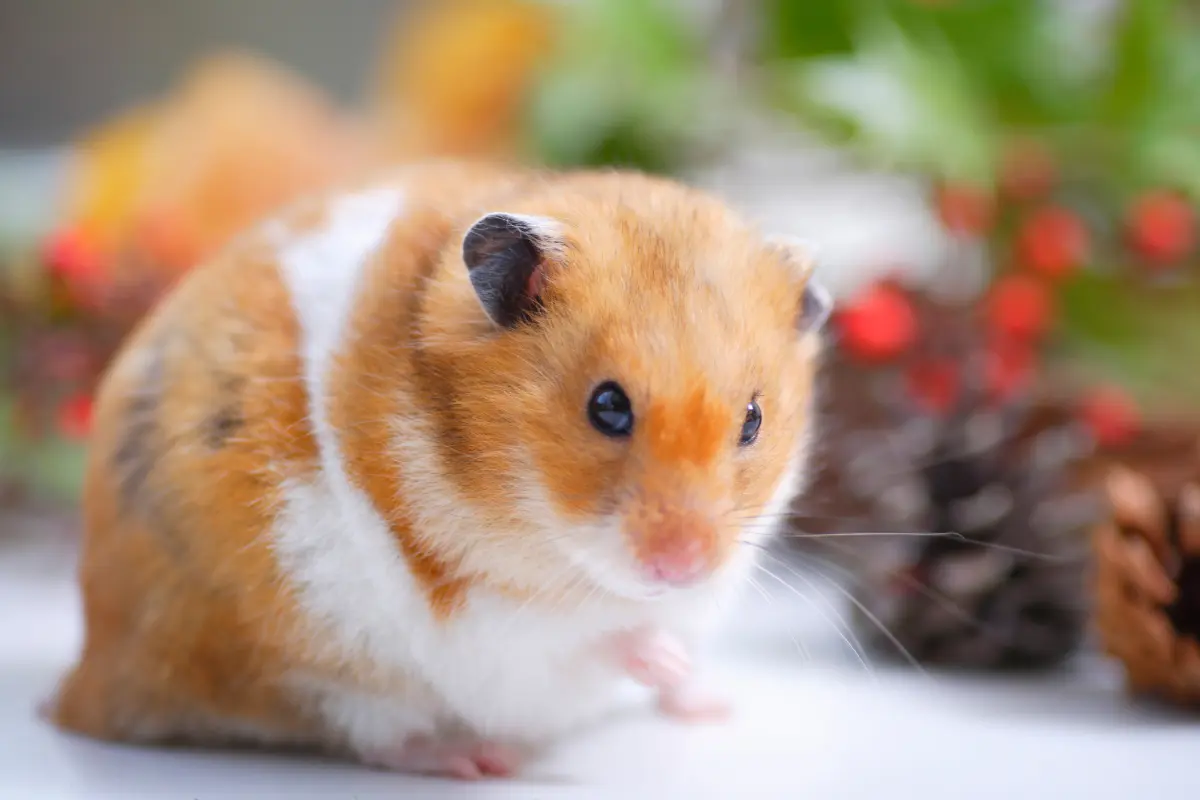
5. Senior Stage (1.5–3 Years)
- Weight: Hamsters may experience a slight decline in weight as they age, often due to reduced muscle mass and lower activity levels.
- Aging Signs: Senior hamsters may have less energy, graying fur, and more sleep. Health issues, including dental problems and arthritis, are common in older hamsters and can impact their weight.
- Lifespan: Hamsters generally live between 1.5 and 3 years, with some Roborovski hamsters occasionally reaching up to 4 years. A drop in weight and activity can signal the start of their senior years.
Factors Influencing a Hamster’s Weight
- Breed: Different species have varying average weights, as outlined above.
- Age: Young hamsters gain weight as they grow, reaching adult weight at about 8 weeks.
- Gender: In some species, females are larger and heavier than males.
- Diet and Exercise: A balanced diet and adequate exercise are crucial for maintaining a healthy weight. Overfeeding or lack of exercise can lead to obesity, while insufficient nutrition can cause underweight issues.
- Health Status: Illnesses, parasites, or dental problems can lead to weight loss. Regular veterinary check-ups are essential to monitor health.
Tips for Supporting Growth and Healthy Weight
- Nutrition: Each growth stage requires a balanced diet. Younger hamsters benefit from a diet higher in protein, while adult hamsters thrive on a balanced mix with fewer high-fat treats.
- Weigh Regularly: Tracking weight is a helpful way to monitor growth, especially during juvenile and senior stages.
- Provide Enrichment: Exercise and mental stimulation keep hamsters active and promote muscle development and overall health throughout their lives.
Supporting your hamster’s growth and maintaining a healthy weight is a combination of balanced nutrition, regular exercise, a comfortable environment, and consistent monitoring. This care approach promotes a long, healthy life for your pet and keeps them thriving at every stage.
